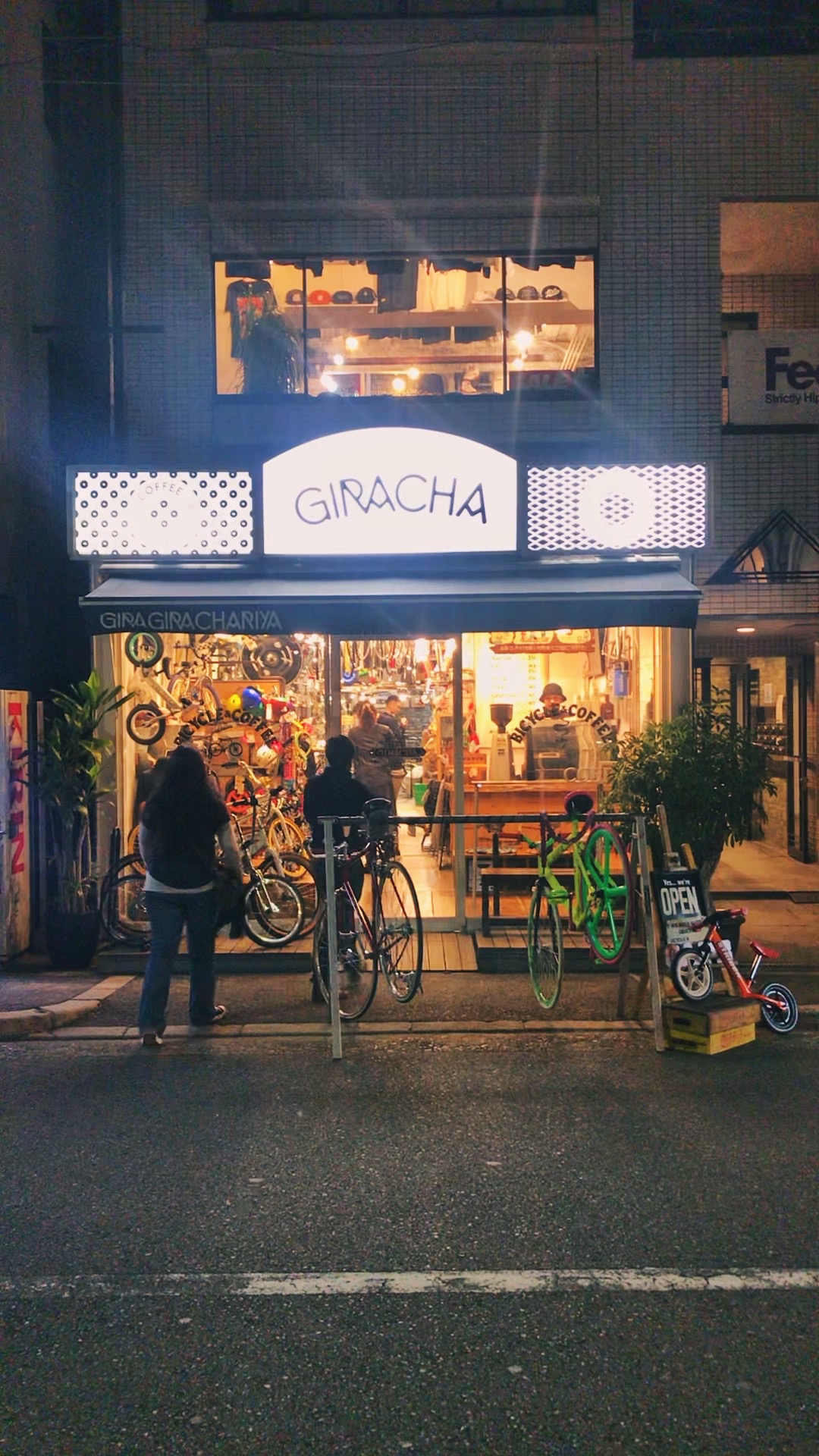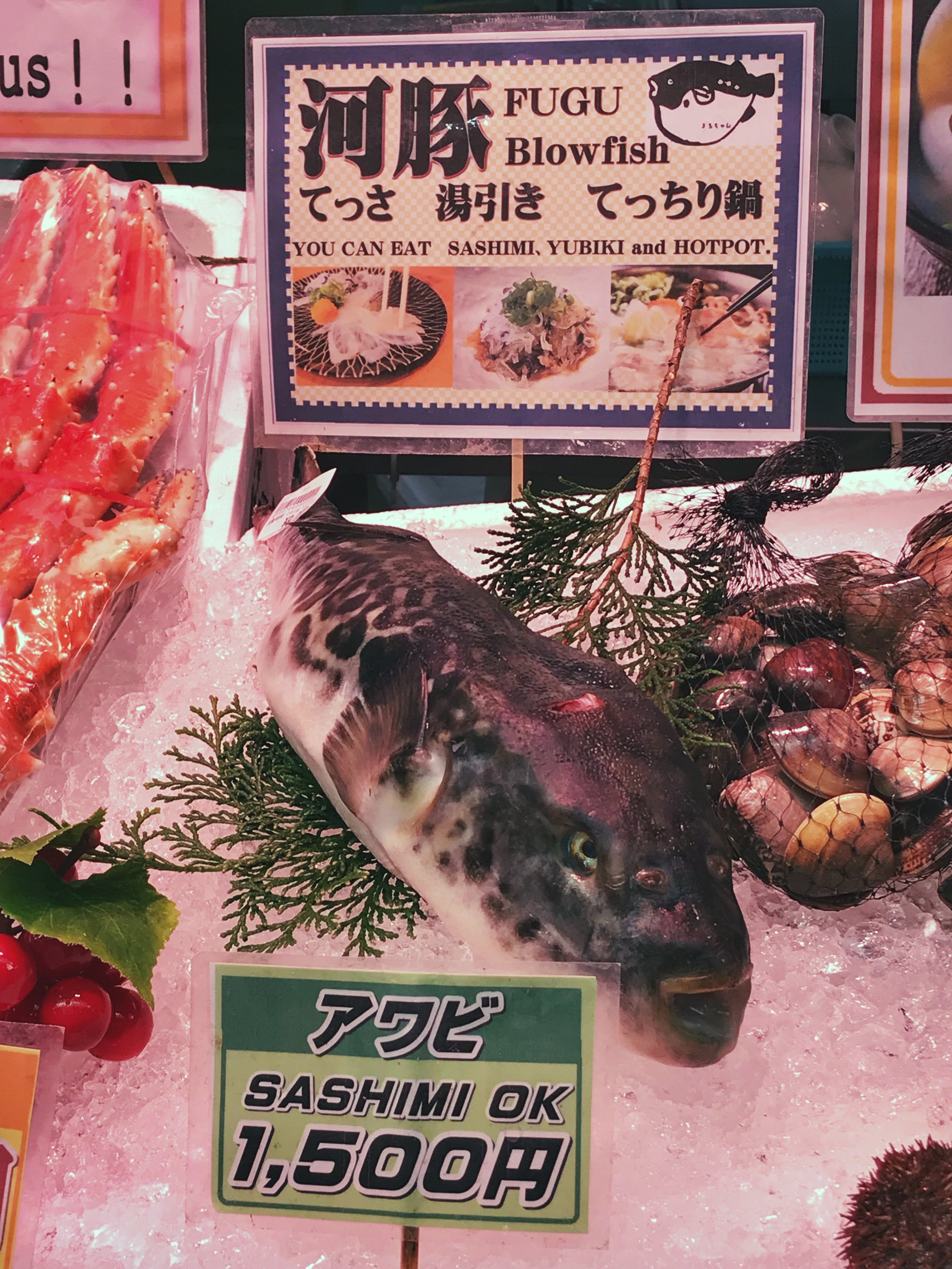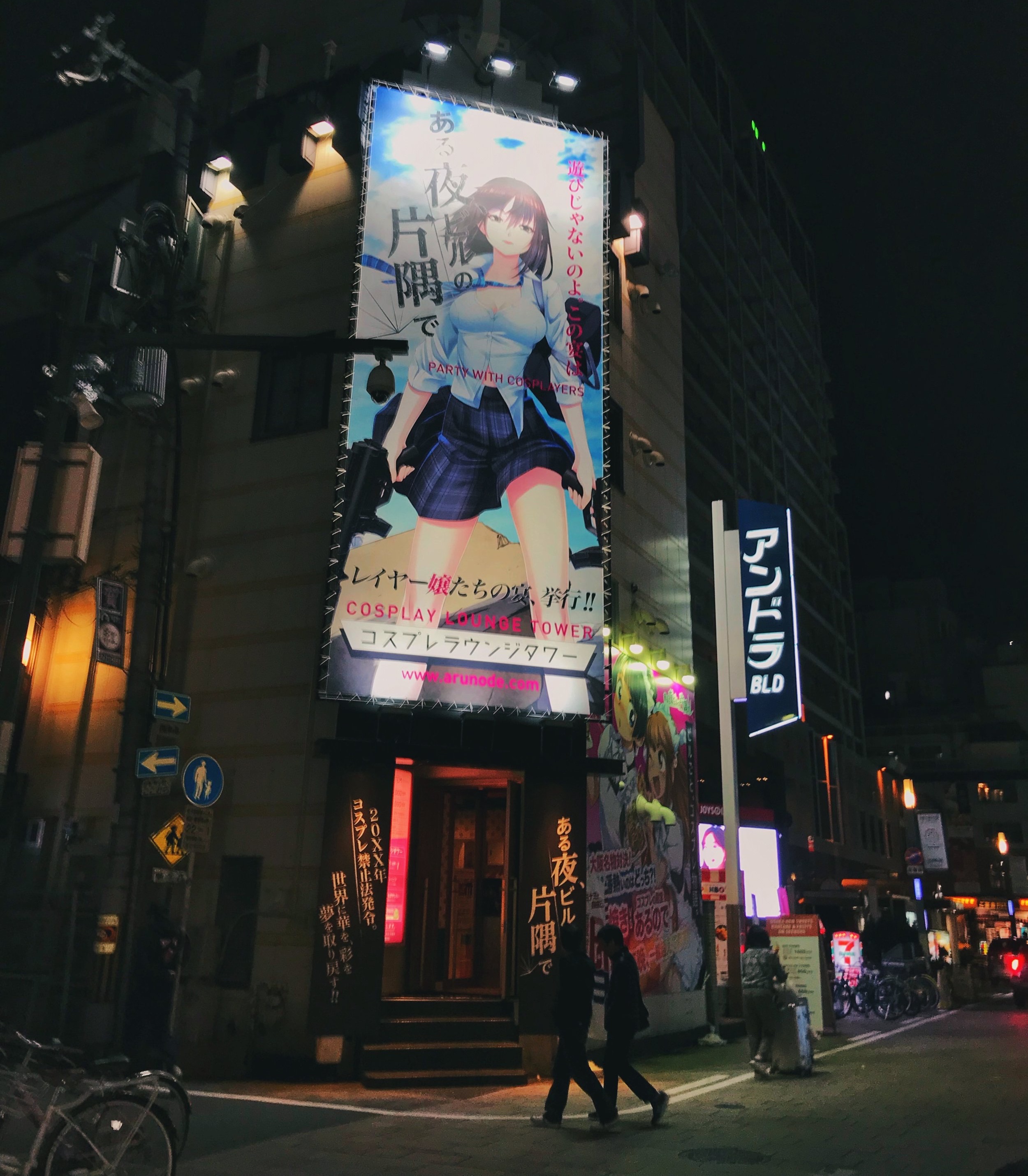First time experience: Cycling and exploring Osaka

Most tourists will know Osaka as a Mecca of delicious food, but if you’re a cyclist it’s somewhat of a pilgrimage to explore the city on two-wheels.
It is quite possibly Japan’s true bike city, with a predominantly flat terrain, very well organised streets, which are full of all manner of bikes from foldies and minivelos, to the more blinged out fixies and vintage bikes, as well as road racers and beater commuters.
After a week of following a set route of long days in the saddle, taking diversions only if necessary, we opted to have a free and easy touristy time in Osaka. This was our chance to unwind after a fairly strenuous tour, and before returning to normal life as we know it. Having worked for a Japanese company in Singapore, Maya had been to the city a number of times already, though this would be the first time Eka and myself set foot there.
I will not lie though. After our days of riding through the quiet villages, peaceful mountains and serene coastal areas (let’s not count the heavy traffic along some parts of the route), Osaka’s crowded streets were a bit of an assault on the senses. It is however a must-visit city in the Kansai region, and Eka and I agreed that it was finally time for us to go. Being a good sport, Maya came along for the ride.
Before arriving in Osaka, you can read about our journey through Shikoku starting with the first part of the series where we cycled to the Oboke Gorge.
Dotonbori
Google Maps: Dotonbori
We opted to stay right outside Dotonbori itself at Hotel Be Zen Shimanouchi, due to its proximity to the train station, and a vast collection of all manner of restaurants and bars. This is where you will see the gaudy neon lights and extravagant signages (with giant puffer fish, crab, okonomiyaki, etc) covering buildings along the Dotonbori river canal and street. We finally got our signature snapshot in front of the Glico Running Man, though we did have to wait for the hordes of tourists to move aside to get a clear shot.
Dotonbori’s history dates back to the early 1600s, when the merchant Yasui Doton invested his funds to develop the area, by diverting and expanding the Umezu River into a new waterway to link the local canal network with the Kizugawa River. It flourished as an entertainment district thanks to a number of theatres and playhouses, and you can still catch classical kabuki plays, opera, modern dramas and musicals at the Shochikuza Kabuki Theatre.
Today though, Dotonbori is better known as a gastronomic wonderland! We joined the legions of locals and foreigners all eager to fill their bellies. There is a crazy amount of food to be had there, including takoyaki, okonomiyaki, izakaya, and different styles of kobe beef, just to name a few. Plan your meals out carefully and you could tick all of the many choices off your list of foods to try. I swear we’d regained any weight we lost cycling by the end of our time in Osaka.
Be prepared to wait in line though, because by the time we sat down for Osaka-style okonomiyaki one night, we realised that we’d been waiting an hour to be seated. The Osaka style is very much different than the Hiroshima style we had while cycling along the Shimanami highway, it is less layered and has no noodles inside. If you’ve never sampled shabu shabu or sukiyaki, this is a good place to do so too. Basically just kiss any diets goodbye and just dive in!
Kuromon Ichiba Market
Google Maps: Kuromon Ichiba Market
While we’re on the subject of food, you obviously have to visit at least ONE market in Osaka. The place gets extremely busy around lunchtime, so like most markets in Japan it’s best to get there a little before midday. Bring as much cash as you can, since not all eateries will accept credit card.
Kuromon has been around for over 170 years, preserving the food and culture of the city. It’s name means Black Gate Market, named after a temple nearby that had a black gate, which was completely destroyed by a massive fire in 1912. You can find more than just food there, including supermarkets that suit different budgets.
The fully covered market stretches 580 metres in total, with 150 stores and 25 eateries to sample from. What we enjoyed most here was the fresh seafood, including the grilled variety, and flame grilled gratin with cheese on top. There’s onigiri, sushi, oden, takoyaki, izakaya, yakiniku, you name it. There’s even grilled fruit there, something we were too full to try.
Wheels for rent
But while Dotonbori was a very quick walk nearby our hotel, many other places we wanted to see were a distance away. Not wanting to unpack the Ritchey Breakaway bikes that had been sent over via ta-q-bin from Onomichi (where we ended our tour), we opted to find some wheels to rent instead. Being a cycling capital in its own right, there were many choices to go for. Here are some options if you’re game for some two wheeled adventures there:
Umegle-Chari (Osaka station)
However, we ended up renting from a completely different place altogether. Feeling adventurous and having missed riding our Birdy bikes, we chose to rent some quirky beater foldies to zip around town. It mostly felt like we were bouncing around to be honest, because the bikes had rear suspension in addition to spring loaded, plush saddles. It made for a lot of giggling while we were riding, and great fun altogether.
Uemachi Rental Bicycle
Google Maps: Uemachi Rental Bicycle
We found Uemachi Rental Bicycle on Google maps, and it looked like the easiest option with no hassles like registration or any paperwork. For easy reference, it is located near the Matsuyamachi Station or Tanimachi 6-chome Station, and costs approximately 1,300 yen or less than RM50 for a full day. The owner was a really nice chap who speaks enough English to help set the bikes up and get you to where you are going, and isn’t fussy about what time you return the bikes; just try to keep him informed if you’re going to be late.
In all honesty cycling in Osaka takes a bit of getting used to considering the amount of pedestrians there, as well as other cyclists. It’s a bit of a rebel town as well, with cyclists cheekily ignoring any regulations for shared use of the roads. We saw both male and female cyclists weaving expertly through the crowd with one hand fiddling with their handphones, cyclists going against the flow of traffic right in the middle of the road, barely anyone wore helmets, and bicycles with parking summonses attached literally EVERYWHERE. It was a stark contrast to cities like Tokyo and Kyoto.
Nipponbashi
Google Maps: Nipponbashi
Also known as “Den-Den Town” or Denki no machi, this shopping district is the main place to go for anime, manga, collectibles and electronics in Osaka. Originally an old bed town known as Nagamachi during the Edo era, many second-hand bookshops opened there during the Meiji and Taishō periods. Electronic consumer shops only became commonplace there after World War II. Today, Nipponbashi is essentially Osaka’s own version of Akihabara Electric Town in Tokyo. Because of this, you will see a lot of Otaku there or cosplayers, particularly if you are there on a weekend.
If you go there in March, the entire area is shut to traffic for the Nipponbashi Street Festa, during which there is a costume parade and live music and dance performances, attended by cosplayers from all over Japan. It seems the largest store entirely dedicated to Gundam in all Japan is not in Tokyo but here, as well as the largest Super Potato, which specialises in retrogames. Nipponbashi is where you will also see Super Mario karts zooming around the streets, and girls in maid costumes at intersections asking you to come eat at their cafes.
Nipponbashi is supposedly famous for its negotiable prices, said to be unique to Osaka and the Kansai region. Prices are lower than Akihabara in general. I was on the hunt for merchandise from one of my favourite animes Attack on Titan, after telling myself not to spend unnecessarily the previous times we were in Japan and regretting it later. We were also looking for some cute trinkets to buy for our nieces and nephew back home.
Osaka Castle
Google Maps: Osaka Castle
Besides Dotonbori, one of the other main touristy things to do is obviously the most well known landmark in the city. Osaka Castle and the adjoining public park are great places to spend some time exploring; there’s a small bike parking area near the main entrance outside the dried up moat. Admission fee costs 600 yen, but there are apparently special rates for big groups.
Widely known as an emblem of the power and fortune of Hideyoshi Toyotomi, Osaka Castle was built in 1583, but was destroyed and reconstructed many times after. The castle repeatedly featured as the battleground of major wars in Japanese history. The massive building is a sight to behold, especially when it glistens in the warm afternoon sun.
Shitennoji Temple
Google Maps: Shitennoji Temple
Japan’s oldest official temple, it was founded in 593 by prince Shotoku Taishi, who played a leading role in introducing Buddhism to the country. As with many temples and castles in Japan, the temple has been destroyed by fire and rebuilt several times, which means several of the current buildings actually date from the 1960s and 1970s.
Most of the outer buildings of the temple are free to view, but there you will need to pay a fee to enter the Chushin Garan or inner temple complex, the Treasure House, and the Gokurakujodo Garden. We mostly wandered around the complex, but if you come on the 21st and 22nd of each month, a large flea market is there, where you can buy textiles, ceramics, second hand clothes, antiques, and ornaments. On January 14th, there is the Doya Doya Festival, where young boys in loincloths compete to catch the most lucky paper charms.
Free Osaka Jogging Guide
This is where things took an unexpected turn. As Maya and I sat outside the Shitennoji Temple waiting for Eka to finish his rounds, we were approached by an elderly gentleman clad in running gear, with the addition of a cycling cap. He recognised ours he said, and quite rightly guessed that we were cyclists. He was on volunteer patrol duty, offered to take us to see some not so well known spots. Check out his Facebook page for more information!
Isshinji Temple
Google Maps: Isshinji Temple
Founded in 1185 by Honen, the founder of the Pure Land Sect, to which the temple still belongs, it is home to the human remains of millions of Osaka residents' ancestors, in the form of something called Okutsu Butsu or "Bone Buddha". The temple was rebuilt following the destruction of Osaka during the closing years of World War II, and it has a more modern appearance right down to the Nio guards at the gates, thanks to the design by the head priest who is also an architect.
Tokoku-ji temple
Google Maps: Tokoku-ji temple
Dated around the same time as the Shitennoji Temple, Tokoku-ji is unique in the sense that it houses two slabs of the Berlin Wall, the only two pieces that can be found in Japan. The temple maintains strong ties to Korea, and these function as a symbol of hope for reunification of the North and South. Keitakuen Garden next door is particularly beautiful to visit at dusk. Right outside, is the vegan restaurant Sakaguchiro, serving kaiseki, traditional Japanese haute multi-course dishes.
Other places to go and things to do
Universal Studios (Google location) - Harry Potter World! (and other stuff, of course).
National Bunraku Theater (Google location) - home of Bunraku theatre for hundreds of years.
Hozenji Yokocho (Google location) - alley with traditional shops and restaurants.
Tenjinbashi-suji Shopping Street (Google location) - the longest in Japan stretching 2.6km.
Tsuruhashi Street Market (Google location) - where Korea meets Japan.
Shinsekai (Google location) - another food hub and the family-run Shinsekai Radium Onsen
Tenma - bars, izakayas and restaurants.
Orange Street and Minamihorie (Google location) - zakka heaven (small fashion or design items).
Amerika-mura (Google location) - a well-known center of Japanese youth culture.
Sumiyoshi Taisha complex (Google location) - has a unique cat shrine.
Liberty Osaka Human Rights Museum (Google location) - explores social issues and Japan’s complex culture.
Momofuku Ando Instant Ramen Museum (Google location) - dedicated to instant and cup noodles.
Osaka Mint (Google location) - home to 400 cherry trees.
Nakanoshima (Google location) - cycle down the O-gawa River.
Utsubo Park (Google location) - small park with fountains and a rose garden.
Minoh Forest (Google location) - an oasis 20 minutes out of the main town.
If all this information is making your head spin and you aren’t particularly keen to do exploring on your own or don’t like getting lost in foreign cities, opt for a guided tour. We have found that a guided cycling tour is one of the best ways to get to know a place, especially if they are run in the manner of a group ride rather than an actual tour. Cycle Osaka is one of the most highly rated.
Clearly the Folding Tales crew needs to go back to Osaka, since we didn’t even scratch the surface of this city! I must admit that with our touring, we don’t spend half the time that most visitors have in the main cities. Perhaps it’s about time that we do more of urban exploration instead of long journeys in the countryside!
More cycling and traveling in Japan
For other cities or locations, do read also:














































